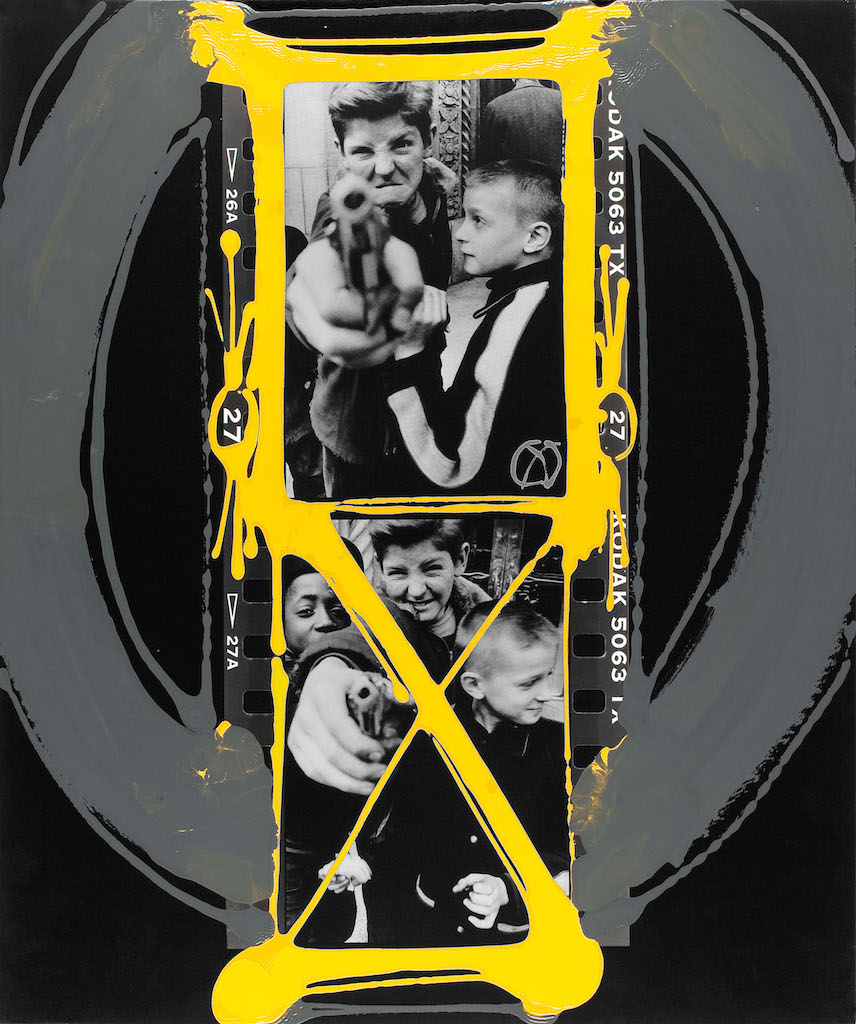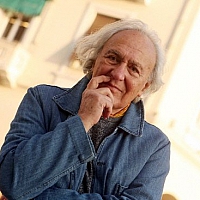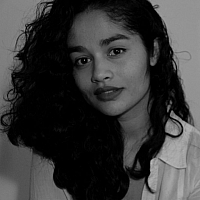
Gun 1, Amsterdam Avenue, New York 1954, painted contact 2001 © William Klein
Expositions du 29/4/2017 au 2/7/2017 Terminé
C/O Berlin Foundation Amerika Haus . Hardenbergstraße 22 - 24 . 10623 Berlin Allemagne
Press release - C/O Berlin Foundation Amerika Haus . Hardenbergstraße 22 - 24 . 10623 Berlin Allemagne
Uncompromising, willing to take risks and beyond the usual conventions – the photographer and filmmaker William Klein has remained true to his unmistakable methods for more than 60 years. From the day the American arrived in Paris in 1948, he sought to experiment and tested out a variety of artistic genres – painting, photography and film – always filled with great curiosity and vitality. He photographed people and fashion in the streets, dealt with current social issues and observed early on the influence of mass media and its impact on a consumer-oriented society. His style is direct, uses strong contrasts and blurred contours, and thus stands in direct contradiction to the technically perfect, aesthetically driven photography of the 1950s. At the same time, the "antiphotographer" developed a sense of the scope of influence that his artistic work allowed him. Both in his street photography as well as in his later films, Klein espoused the rights of African Americans and portrayed personalities such as Muhammad Ali, Little Richard and Eldridge Cleaver.
William Klein‘s most famous and at the same time most influential work is the photo book entitled "New York 1954-1955", for which he returned to his hometown in the mid-1950s. He wanted to radically recapture the city – subjectively, intuitively and using unexpected perspectives. In the end, he portrayed the booming metropolis, the city of Coca Cola, of big cars and flashing billboards, as a dark, harsh and oppressive place. In that sense, the title of the New York book published in 1956 serves more as an ambivalent recommendation: "Life is Good and Good for You is New York: Trance Witness Revels". Klein reinforced these impressions a few years later – this time using the medium of film: "Broadway by Light"(1958) resembles a dizzying collage of abstract shapes and figures, made of pulsating neon lights and dancing illuminated letters.
Even as a fashion photographer, Klein always worked on the edge of formal and conventional predetermined restrictions. The self-taught artist tested new imageries and turned the relationships of the photographic process upside down. For Klein, the medium of photography was an experimental space in which he felt free. Like paintings on canvas, he designed photosensitive surfaces made of photo paper for use as photograms. He captured the light with the camera or simultaneously photographed the beam of a flashlight in long exposures and a fashion image.
As he left fashion photography behind him in 1965, he declared with no small degree of pride that his photos were by far the most unpopular ever to be published in Vogue. His films "Qui êtes-vous, Polly Maggoo?"(1966) and later "Mode in France" (1984) are satirical commentaries of the fashion world. Many of his films deal with power structures and are driven by the hope that in the end those in the minority or who are rebelling against the establishment will come out on top. Both his photographs and his films are characterized by the desire to document and reflect upon people both as individuals and in the society in which they live.
.jpeg)
Cine- poster Tokyo 1961 © William Klein
After many years, C/O Berlin is dedicating a comprehensive retrospective as the sole location in Germany to the 88-year-old artist for the first time. The focus is on more than just the views of the cities of New York, Moscow, Rome or Tokyo but rather also on William Klein as a transformer between the mediums of photography and film. C/O Berlin is continuing the examination of these forms of media that the works of artists such as Martin Parr, Robert Frank or Gordon Parks have already illuminated. Interaction, media transformation and continuing development will be the focus. The exhibition comprises around 300 exhibits – large tableaux, vintage prints, contact sheets, books, magazines and movies. It correlates his photographic and film works that have been created in the past 60 years. With his unique style, Klein has long been a role model and a source of inspiration for many young photographers and filmmakers.


